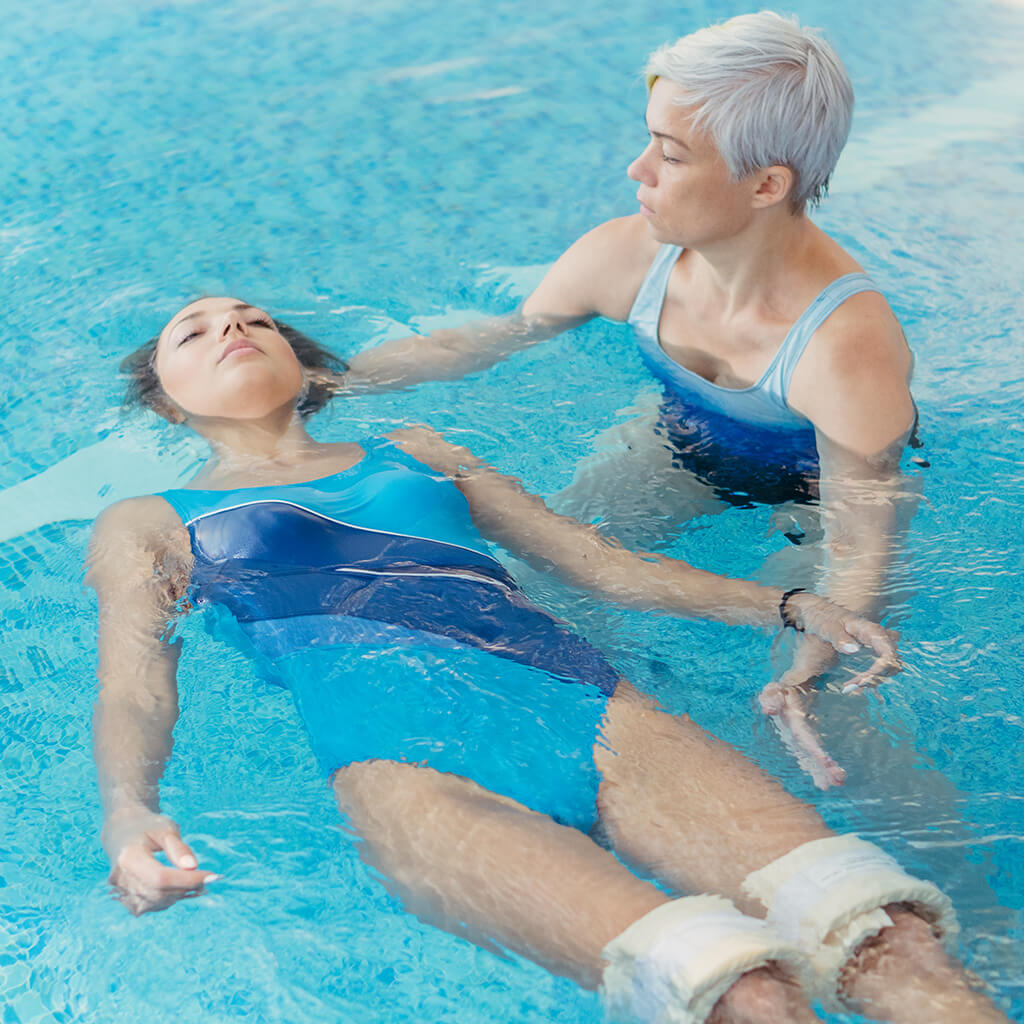Hydrokinesitherapy: how physiotherapy in water works

Publication date: 11-12-2021
Updated on: 14-02-2023
Topic: Rehabilitation & Physiatry
Estimated reading time: 1 min

Article Author
Communication Team GSDMedical Editor
Lucia di Salvo
Editor and Translator
Viktoryia LuhakovaIt is an ancient medical discipline that treats movement disorders through water. The expert from the Zucchi Clinical Institutes explains for whom it is and isn’t indicated
Hydrokinesitherapy aims to treat movement disorders through water, exploiting physical properties such as buoyancy, hydrostatic pressure and temperature. It is indicated as a specific method of prevention, treatment and rehabilitation for general and sports trauma, for the postoperative recovery of meniscus injuries, fractures, sprains, muscle and tendon injuries.
What happens to our body in the water?
“In water the weight of the body decreases due to the buoyancy effect, movements are wider, muscular effort is reduced, joint pain is greatly attenuated, thus obtaining a joint discharge. Furthermore, the typical inconveniences of the initial phase of ground therapy such as microtrauma, inflammation, joint effusions, which often cause delays in functional recovery, are greatly reduced. Furthermore, patient in pain is facilitated to stand upright and to walk,” reports Dr. Lucia di Salvo, physiatrist at the Zucchi Clinical Institutes and specialist in Medical Hydrology and Thermal Medicine.
In water exhalation is facilitated and venous reflux improves thanks to the hydrostatic pressure which causes an increase in intra-abdominal pressure which pushes the diaphragm upwards, inducing an increase in the workload on the inspiratory muscles.
“Physical resistance of water to movement is also a determining aspect for the physiological variations that exercise in water can induce: neuromotor control and balance of the patient is improving by increasing speed of movement in the water,” continues Dr. di Salvo.
Finally, a fundamental role in hydrokinesitherapy treatment is played by temperature. In fact, water’s temperature determines:
- reduction of joint stiffness and muscle spasm;
- increased blood flow;
- analgesic effect.
The Vascular Path inside the hydrotherapy pools consists in a path with hot/cold water and hydromassage that is specially designed for the treatment of circulatory diseases of the lower limbs and determines:
- activation of the microcirculation;
- activation of collateral circles;
- anti-edema effect.
Pathologies it is indicated for
The rehabilitation aspect of hydrokinesitherapy plays a fundamental role as a specific method of prevention, treatment and rehabilitation of the following diseases:
Musculoskeletal disorders such as:
- fractures;
- coxarthrosis;
- gonarthrosis;
- shoulder pathologies;
- post-operative recovery in shoulder, hip and knee surgery;
- hypokinetic syndrome of prolonged immobilization.
Hydrokinesitherapy also plays an important role in muscle strengthening prior to a hip and knee prosthesis surgery.
Vascular diseases such as:
- sequelae of chronic phlebopathies;
- chronic venous insufficiency (varices);
- outcomes or sequelae of peripheral vascular surgery;
- varices of the lower limbs;
- chronic vasculopathy of the lower limbs;
- functional peripheral vascular disorders.
Neurological disorders such as:
- Parkinson's disease;
- peripheral nerve injuries;
- hemiplegias, paraplegias;
- multiple sclerosis.
What are the contraindications
Hydrokinesitherapy is not suitable for patients with:
- severe respiratory failure;
- presence of any type of not completely healed wound or sores;
- unstable coronary heart disease;
- severe heart failure;
- severe and unstable arterial hypertension;
- hypotension.